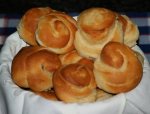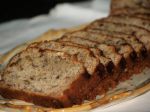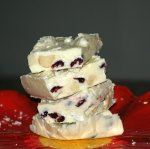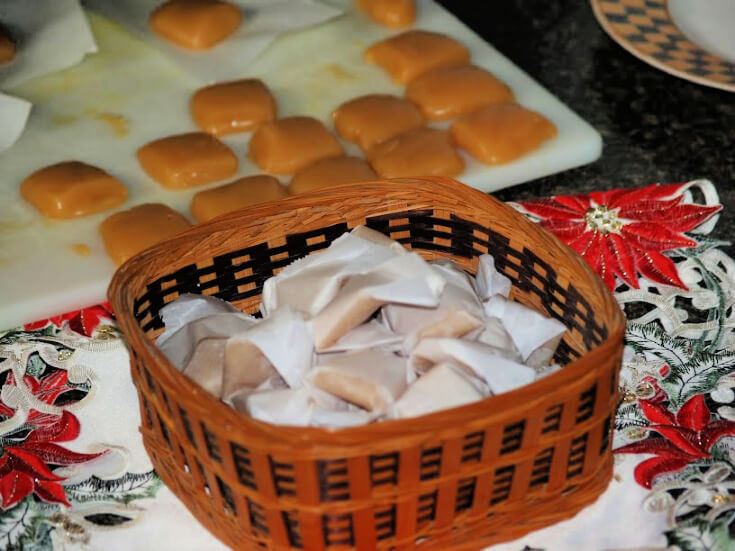- Painless Cooking
- Grains
- Kasha
What is Kasha?
The question, what is kasha, is not one often asked in Europe or Russia, but here in the United States it is fairly common. Kasha is a staple in many countries throughout the world and is most commonly known as porridge, though it has many other uses. Kasha has multiple health benefits, can be prepared in a variety of ways, and is a good source of vitamins and minerals.
What are Whole Grains and is Kasha One of Them
To further answer the question, what is kasha, you may be interested
to know that it is actually buckwheat seeds. Buckwheat, despite its
name, is a fruit in the family of sorrel and rhubarbs which is
surprising since kasha tastes like a grain. Why you ask? Well, a whole
grain is a food that contains all of its essential parts, the seed,
endosperm, and naturally-occurring nutrients, of the entire grain, all
of which remain with the grain even when processed or cooked. The
keyword in this definition is “seed” because while Kasha comes from a
fruit, it is actually a seed, which makes it a whole grain. Note,
however, that while this is true for Kasha, not every seed is a grain.
What is Kasha?: Types of Kasha
To expand on what is kasha you should know that it is not only a hulled buckwheat kernel but can also be cracked or ground into products with different consistencies. If you prefer nuttier flavors, you are most likely to enjoy a coarse, or groat, kasha grind while the finer, or grit, grinds have a less prevalent taste.
Cooking with Grains
Although it is not a grain, cooking Kasha groats is quite similar to the way grains, such as rice, are prepared, as they need to soak to soften and absorb water. To use the groats in place of rice simply simmer two parts water to one part kasha for 15 minutes. The kasha grits are a healthy way to thicken soups or stews as they are far better for you than flour or cornstarch. In general however, kasha may be baked, steamed, boiled, or served in its natural form with a bit of seasoning. Many kasha recipes are available, but one recipe worth trying is Kasha and Bowties, or Varnishkas, if you are eating this staple in Western Europe. To make this traditional dish you need:
POLISH VARNISHKAS
What is kasha when combined with pasta or noodles?
- ¾ Cup kasha
- 1 Can (14 Ounces) chicken broth
- 1 Package (12 Ounces) bow tie pasta or egg noodles
- 2 Medium onions (Diced)
- 2 Tablespoons olive oil
- Salt/ pepper to taste
Combine kasha and chicken broth in a saucepan; bring to a boil.
REDUCE HEAT and simmer uncovered for 15 minutes.
Cook noodles according to package directions or desired doneness.
Drain noodles and rinse under cold water; drain well.
Add oil to a large skillet and heat over medium.
Add onions and cook until light brown 7 to 10 minutes.
Add the pasta and kasha to the skillet stirring to blend.
Season with salt and pepper and serve.
HUNGARIAN VARNISHKAS
- 1 Cup buckwheat groats
- 1 Beaten egg
- 2 Cups chicken broth
- 1 Chopped onion
- 1 Teaspoon salt
- 1 Cup cooked noodles
- 1 Tablespoon butter
Sauté onion with butter and salt; mix buckwheat kernels and egg and add to onions.
Add liquid and bring to a boil; cover tightly, lower heat and cook 15 minutes.
Add cooked noodles; serve as a side dish.
HOW TO MAKE KASHA BURGERS
- 3 Tablespoons butter (or more)
- 3 Cups chopped onions
- 3 Cups chopped portobello mushrooms
- 2/3 Cup white wine
- 2 Cups water
- 1 ½ Teaspoons dried thyme
- ½ Teaspoon dried sage
- 3 Tablespoons soy sauce
- Black pepper to taste
- 1 Cup kasha
- 3 Tablespoons flour (Plus more for shaping burgers)
Melt 1 tablespoon butter in large skillet; sauté onions over medium heat until they begin to brown.
Add mushrooms and 1 more tablespoon butter; stir and sauté for 2 minutes.
Add wine, water, thyme, sage, soy, pepper and kasha.
Bring mixture to a boil over high heat; cover, reduce heat and simmer 15 minutes.
When grains are tender and water is absorbed, dump into a large bowl and let cool for 10 minutes.
Stir in 3 tablespoons flour until blended; with well floured hands shape mixture into 4 patties.
In large skillet melt remaining butter over medium heat; brown patties on both sides.
NOTE: Add more butter or some oil if needed to brown all patties.
Serve with sliced onions, tomatoes and lettuce on buns.
WARM ASPARAGUS KASHA SALAD RECIPE
What is kasha in this salad?
- 1 Beaten egg
- 1 Cup kasha
- 1 1/3 Cups chicken broth
- 1 ¼ Cups finely chopped onion
- 3 Tablespoons cooking oil (Divided0
- 2 ½ Cups sliced mushrooms
- 3 Cups fresh asparagus (Cut in 1 – 1 ½ inch pieces)
- 3 Cloves minced garlic
- 1/8 Teaspoon salt
- 1/8 Teaspoon pepper
- ¼ Cup water
- 1 Cup chopped red bell pepper
- ½ Cup diced celery
- 2 Tablespoons minced fresh parsley
- 2 Tablespoons balsamic vinegar
Combine egg with kasha and stir to coat; place in a non stick skillet.
Place skillet over medium heat; stir and cook until kasha is dry about 2 minutes.
Stir in the chicken broth and onion: bring to a boil.
REDUCE HEAT to low; cover skillet and simmer for 15 minutes until kasha is tender.
In another skillet heat 2 TABLESPOONS of the oil; add mushrooms and saute3 minutes.
Add asparagus, garlic, salt and pepper; sauté and stir for 1 minute.
Add the water to the skillet; cover and steam vegetables for 2 minutes.
Remove cover from pan and RAISE HEAT to high; cook until all liquid evaporates.
Combine in a large bowl the kasha, vegetable mixture, red pepper, celery and parsley.
Mix vinegar and 1 TABLESPOONS oil; pour over bowl mixture and toss to coat.
Serve at room temperature; serves 6.
So, what is kasha you asked; it is a good for you, wholesome, nutritional, and tasty fruit that can be consumed in a number of ways. It is a product that other cultures have enjoyed eating for centuries and is something that Americans should consider as part of their diet to sustain a healthier lifestyle.




